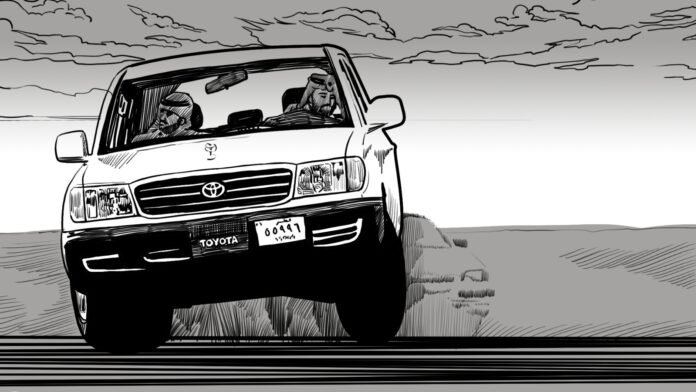Some exhibition sports involve significant risks. However, there are those who excel with exceptional skill despite their challenges. Yet, no matter how professional and experienced one may be, a single mistake can turn a breathtaking performance into a tragedy, claiming the lives of young individuals who embraced these sports with passion and courage.
Among these exhibition sports is Fantasia, also known as Tbourida, a traditional Moroccan equestrian performance art that was inscribed on UNESCO’s Representative List of the Intangible Cultural Heritage of Humanity in 2021.
This art dates back to the 16th century and reflects inherited military traditions from Arab and Amazigh heritage. It revives ancient rituals and customs in which riders showcase their skills in controlling horses, coordinating their movements with precision, speed, and bravery, while simultaneously firing gunpowder rifles known as mokahla, adding an exhilarating and unique atmosphere to the performance.
However, these rifles remain a double-edged sword. While they contribute to victories and point accumulation in competitions, they can also cause fatal accidents among riders, as has occasionally occurred during Moroccan national festivals.
I have read numerous articles about Tbourida accidents. Arabi21 reported the story of a rider who lost his life during the Moulay Abdallah Amghar Festival in El Jadida in 2023 after being struck by a misfired gunpowder shot. Sawt Al-Adala mentioned another case where a rifle exploded in a rider’s face as he was retrieving it from his car in preparation for an event in Bouâda Sidi Yahya. Meanwhile, Télévision 36 documented a 2024 incident where a rifle exploded in a rider’s face during a live performance.
These tragic incidents have led many to call for stricter safety measures to ensure the well-being of participants in traditional and heritage-based activities. There are growing demands to reassess security and safety standards to protect the lives of those taking part in such events, which are an integral part of Moroccan cultural identity.

The stories of Tbourida reminded me of the car drifting performances that some young people engage in while driving, known in Qatar as “Tahfis”, and referred to in other Gulf countries as “Tafhit,” “Taqhis,” and “Tashhit.” This style of driving involves the driver skillfully controlling the car, making it slide in the opposite direction while maintaining full control.
Young people gather in remote streets and open areas, far from the eyes of authorities, as this sport is banned due to its dangers and the threat it poses to public safety.
I was particularly struck by the rhythmic speech of a preacher who once said:
“How do some of our youth turn this blessing into a curse? We have seen them play with death, gamble with their lives, endanger the innocent, and squander their wealth.”
He then described this exhibition sport as a “game of death” before continuing in the same rhythmic tone:
“Drifting and dune bashing… square turns and spinning… madness and recklessness.”
Numerous campaigns across the Gulf call for guiding young people away from this sport due to its risks and irresponsible practices. Some religious scholars prohibit it, others criminalize it by law, while others see it as nothing more than a waste of time and money, as the preacher highlighted in his speech.
However, it is commendable that the state did not succumb to these pressures and instead allowed young people to practice this sport legally in designated arenas, providing them with a safe space to channel their energy.
This reflects the government’s growing awareness that drifting is a sport that requires proper venues and training to be practiced professionally. I have seen in some countries how companies compete to sponsor skilled drivers, equipping their cars in ways that enhance their performance for showcasing their abilities.
In an interview with British professional drifter Ollie Silcock, published on Witham Group’s website under the title How to Become a Professional Drift Racer?, Silcock discussed the evolution of drifting, the English term for Tafhit, which translates to “skidding” or “sliding” in Arabic.
He described it as a competitive sport in the United Kingdom and emphasized the dedication required to reach a professional level, detailing the technical specifications of his Nissan Silvia S13, equipped with a 675-horsepower engine.
Silcock also highlighted the rapid growth of the sport, the significant personal and financial investments made by drivers, and the crucial role of sponsorships and high-quality automotive products in enhancing vehicle performance.
In another article published on the Taxis Drift Academy website, a connection is drawn between drifting and traditional car racing, emphasizing that drifting is not merely an exhibition but a discipline that enhances fundamental driving skills such as vehicle control, weight transfer, and throttle modulation.
The article gains credibility from the expertise of Dave Ogborn, a professional race car driver and test driver for Goodyear, who highlights how drifting helps build muscle memory, improve reflexes, and increase adaptability. These benefits make drivers not only more efficient in racing but also better prepared for everyday driving and accident avoidance.
In this context, Qatar has introduced safe alternatives for young drivers by establishing legal racing circuits where car enthusiasts can practice their skills in a controlled environment. Additionally, professional motorsport training programs have been launched to channel youth energy into official motorsports competitions, rather than illegal street drifting. The country has also begun organizing competitions under official supervision, providing exciting and structured alternatives for young drivers.
In 2024, Qatar hosted the Qatar Free-Style Championship at the Qatar Racing Club and Motorcycle Federation, with over 55 competitors and a large audience in attendance, according to Al Sharq newspaper.
The competition, which lasted over five hours, showcased impressive performances from the participants, culminating in an awards ceremony where the winners were crowned by Sheikh Jaber bin Khalid Al Thani, the club’s general manager.
In January 2025, the Sealine Circuit Club (Mowater) launched its motorsports season, featuring seven different championships aimed at providing an exceptional sporting and entertainment experience for motorsports enthusiasts. The events offer cash prizes of up to half a million Qatari riyals.
Established in 2020, the Mowater Club was created to organize elite motorsport championships, reinforcing Qatar’s status as a leading destination for motorsports in the region.
The Mowater Circuit kicked off its season with the Shell Championship, a unique skill-based competition that requires driving on two wheels only. The season aims to provide a safe and organized platform for young drivers and motorsport enthusiasts to express their passion in an environment that prioritizes safety and responsibility.
It is unfortunate that some young people continue to practice this sport illegally, putting their lives at risk despite the state’s efforts to guide them toward safer alternatives.
From a legal standpoint, the Traffic Department has tightened penalties for those engaging in this sport unlawfully. In a video published by the Qatar Ministry of Interior on its X (formerly Twitter) account, a car is seen drifting recklessly in the middle of a public road. The surveillance cameras captured the vehicle speeding excessively on a street in Doha, with the driver performing dangerous and reckless maneuvers.
The Ministry of Interior successfully identified the driver and confiscated the vehicle. However, the penalty did not stop there—the car was completely crushed, with the entire process filmed as a warning to other potential reckless drivers who engage in illegal drifting.
The video also explained that Article 57 of the Traffic Law explicitly prohibits driving a vehicle recklessly, negligently, or in a manner that endangers lives and property.
It further stated that violating this law results in imprisonment for no less than one month and up to three years, or a fine ranging from 10,000 Qatari riyals to 50,000 riyals, or both penalties, as stipulated in Article 94 of the same law.
The video concluded with a firm message:
“The Ministry of Interior will not hesitate to take all necessary legal measures against those who violate the traffic regulations and laws in force.”
Penalties may serve as a deterrent, but the primary goal is to bring about behavioral change and make safe driving an integral part of the community’s culture. This is where alternative activities, media awareness, and educational campaigns play a crucial role.
Community awareness is one of the most effective tools in combating illegal drifting and reducing accidents caused by it. These initiatives aim to spread awareness among young people and society about the dangers of reckless driving and its negative consequences on individuals and the community as a whole.
A study published in Al-Madina newspaper revealed that awareness efforts rely on various means, including media campaigns that produce documentaries and educational films highlighting the dangers of drifting. These productions often include testimonies from accident victims and their families, making the message more impactful.
These campaigns utilize television, radio, and social media platforms to showcase the catastrophic consequences of illegal drifting, featuring real-life accident footage, alarming statistics, and expert insights. Traffic specialists, doctors, and law enforcement officials are frequently invited to talk shows to discuss the legal, health, and psychological repercussions of this dangerous sport.
Experts should also consider integrating traffic awareness into school curricula, educating students from an early age about the risks of reckless driving. Workshops and lectures can be organized in collaboration with security authorities to explain the laws and penalties associated with illegal drifting, as well as its broader impact on society. Additionally, guest speakers who have suffered drifting-related injuries could share their personal experiences with students to deliver a more powerful and relatable message.
It may also be beneficial to invite professional motorsport champions and individuals with global achievements in the field. Leveraging influencers and celebrities can inspire young drivers to pursue safe and professional motorsports rather than engaging in reckless, unlawful behavior.
Just as misusing a Tbourida rifle can turn it into a lethal weapon if its functionality and safety are not properly considered, the same applies to cars. When driven recklessly, they can become deadly tools, endangering both the driver’s life and the lives of others.




